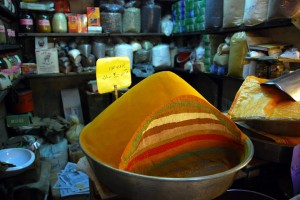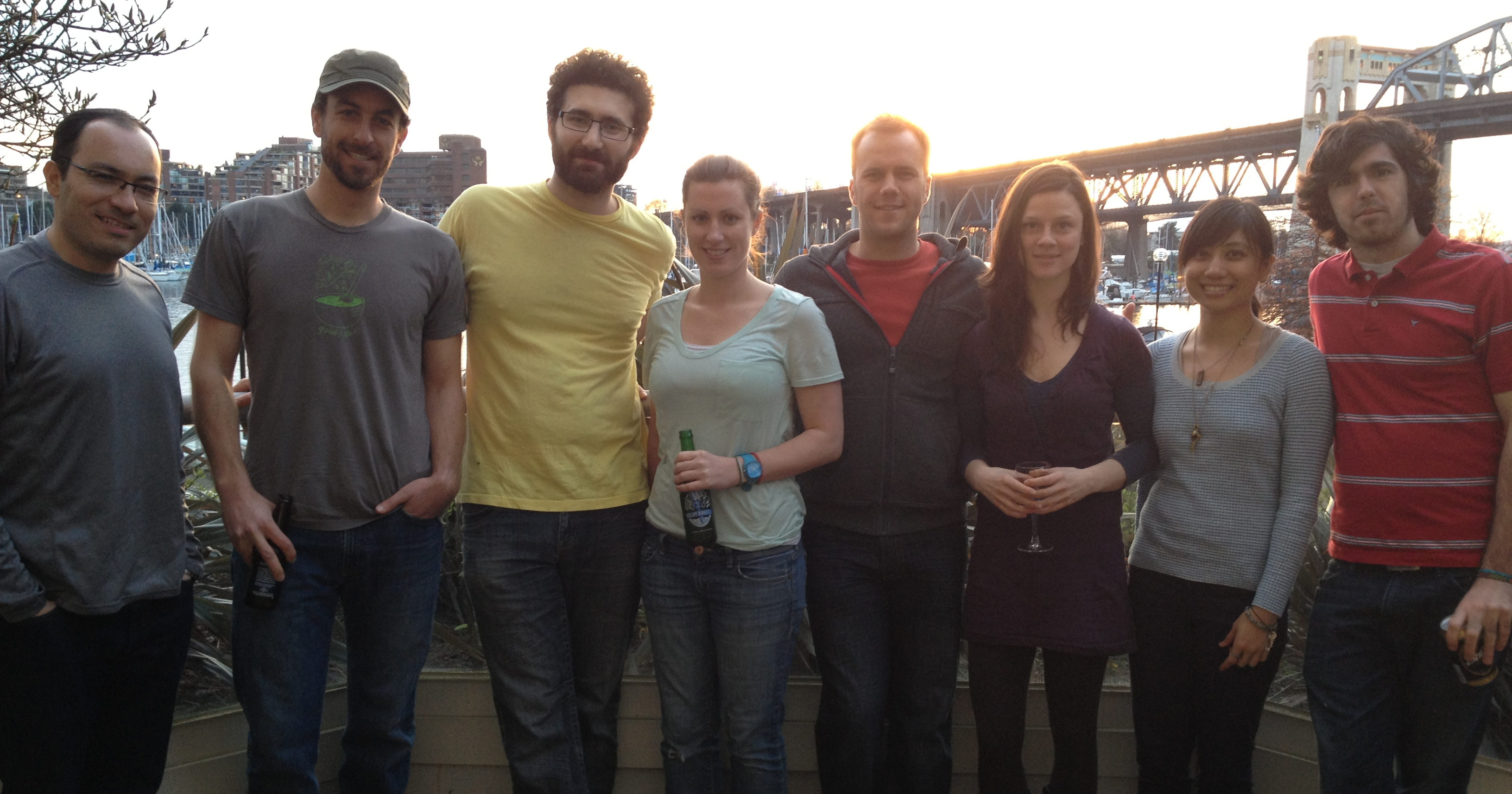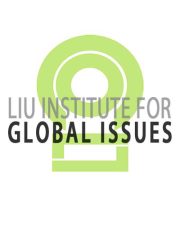In October of last year, the UN warned–ominously–of a new global food crisis threatening to hit sometime in 2013.
Apparently, 2012’s record heatwaves and droughts brought crop reserves down to historic lows. While those of us in the global North are largely insulated from the vagaries of these fluctuations, at least 870 million people in the global South remain chronically malnourished, while grain supplies in the politically volatile Middle East and North Africa are precariously diminished.
.
Click here to jump to our video interview with Dr. Navin Ramankutty, McGill University’s Tier II Canada Research Chair in Land Use and Global Environmental Change. Or keep reading, below.
Given current trends, the picture seems unlikely to get any rosier, with no less than 2 billion people projected to suffer from malnourishment by 2050, at which point the planet will be home to 9-10 billion people.
The Guardian’s Global Development blog reported last week on a new study (Hawkins et al., Global Change Biology, in press) predicting the looming negative impact of record heatwaves and droughts on global food security.
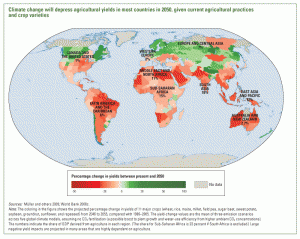
Projected climate change effects on global agriculture, via the World Bank (2010). (Click to enlarge)
Drawing on historical French maize data, Hawkins et al. find that for every day with temperatures over 32◦C, there have been serious reductions in crop yield. They infer that the only way to mitigate potentially catastrophic shortfalls in coming, hotter years is to somehow boost European yields by no less than 12%, ostensibly through some yet-to-be developed technology.
But while developed nations innovate ways to boost their heavily subsidized, irrigation-and-fertilizer buoyed yields even higher, countries in the South still struggle to achieve even subsistence levels of productivity. And these processes are often directly linked. In the news just this month:
- Haitian rice farmers have been impoverished by US domestic rice subsidies (check out FP’s striking photo gallery of the Arkansas-Haiti standoff, here)
- Corn-dependent Central America is literally being starved by the price dislocations of US biofuel cultivation (excellent piece by the NYT)
- Malawi’s once highly-successful fertilizer-subsidy program has unraveled in the face of foreign donor flight
- Southern countries are now seriously considering floating, lake-based agriculture to overcome their dramatic water shortages relative to heavily-irrigated Northern competitors
As if to add insult to injury, recent data have emerged suggesting that up to one half of all food is wasted, globally. (Yes, one half.)
In the South, much of this waste is the fault of insufficient infrastructure. In the North, it’s mostly driven by wasteful consumption practices (read: buying more than you can eat, supermarkets rejecting ‘ugly’ produce, buffets, etc.).
Merely reducing such wastage could, apparently, boost food production by 60%-100% (check out this article for some innovative ideas on how we can do it).
In the midst of the jarring geographical contrast between the ‘wasteful North’ and ‘starving South,’ plus the wild card of climate change looming on our collective horizon, we are also awash with clashing, largely ideological, camps proclaiming they have the one-stop solution to our planet’s (food) woes: organic agriculture, localism, urban agriculture, GM (or non-GM) agriculture, radical technological innovation (e.g. test-tube meat).
Yet, despite the warm-fuzzies gained from buying only local, organic food, actual research has shown that these non-conventional approaches are best suited only for particular niche crops and environments. Neither approach on its own, nor combined, will solve our global food crisis in the coming century.
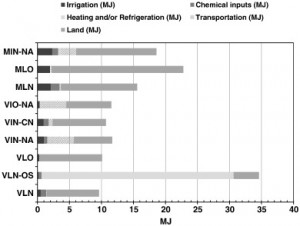
Relative energy inputs required for different meal types, in Montreal, Canada. V=Veg; M=Meat-based; L=Local; I=Internationally sourced; O=Organic; N=Not organic; OS=Out-of-season; NA=North American imported; CN=China imported. Local, out-of-season non-organic vegetarian meals far exceed all other types in energy intensity. Local, organic, meat-based meals are second worst. Via Thibert and Badami (2011), Ecol Econ. (Click to enlarge)
In fact, recent research shows buying local food that is out of season is perhaps the least environmentally friendly thing one can do (not to mention the impacts it has on the livelihoods of Southern farmers).
This is why we find McGill professor and Tier II Canada Research Chair Dr. Navin Ramankutty’s assessment refreshing.
Ramankutty’s research suggests that global food productivity can be doubled by making intelligent tweaks on a global scale: increased fertilizer and water applications in Africa and Latin America, and less fertilizer, and perhaps more organic and urban agriculture (for certain crops only) in the global North. Seriously reducing our consumption of meat, he argues, could drastically improve energy efficiency, while making across the board policy efforts to reduce various kinds of waste could free up a huge number of calories for the planet.
Here’s our own exclusive 10-minute interview with Dr. Ramankutty, who sat down with us at the Liu Institute for Global Issues late last year:

Stay tuned (RSS | Facebook | Twitter) for more videos on a range of international development topics this term.
In the meantime, for more on global food security, check out the following recent pieces:
- Fragile Harvest (excellent long piece)
Here are some oft-cited recent academic papers on the issue:
- Foley et al. (2011) Solutions for a cultivated planet in Nature
- Lambin and Meyfroidt (2011) Global land use change, economic globalization, and the looming land scarcity in PNAS
- Godfray et al. (2010) Food security: the challenge of feeding 9 billion people in Science
- Cordell et al. (2009) The story of phosphorus: global food security and food for thought in Global Environmental Change
- Monfreda et al. (2008) Farming the planet: 2. Geographic distribution of crop areas, yields, physiological types, and net primary production in the year 2000 in Global Biogoechemical Cycles
And for some long-form thoughts on global food security and its ramifications, have a look at:
- Duncan Green’s From Poverty to Power, now updated to include a section on the 2008 food price spikes. The new edition was just released by the UN’s World Institute for Development Economics this past fall. (IDRN review forthcoming)
- Kenyan Harvard professor Calestous Juma‘s The New Harvest: Agricultural Innovation in Africa. Juma focuses on the policy and institutional innovations he sees as crucial to meeting the challenge of African food security in the coming century. The book was released by Oxford University Press in 2011. (IDRN review forthcoming)

